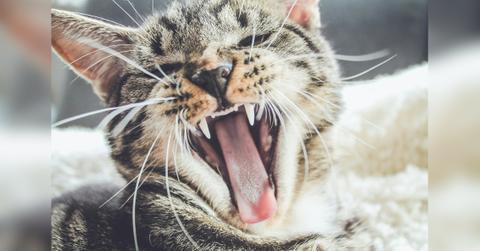 NEWS
NEWSPet Cat Suffering from Gingivitis: How to Deal with It?

Oct. 14 2025, Published 1:32 a.m. ET
Gingivitis in cats is quite common. It is an inflammation of the gums surrounding the cat’s teeth. This oral disease can range from moderate to severe, and in some cases, the cat may have difficulty eating. In the long run, this can become quite uncomfortable. To heal your pet, it is crucial to have the teeth cleaned under general anesthesia.
What Signs Should you Look Out For?
Most pet owners don’t have a clue whether their feline friend has gingivitis or other dental problems. To ensure you know what it is, we have listed the common signs of gingivitis to look out for.
- Bad breath.
- Refusal to eat.
- Swollen gums, especially around the inner cheek.
- Experiencing difficulty in picking up their toys or food.
- Drooling from the corners of the mouth or dropping food while eating.
- Plaque or tartar buildup on the surface of the teeth.
If you notice any of these signs, you should immediately visit a reliable vet hospital for prompt care. Check out Hershey Vet Hospital. It is one of the leading hospitals. It offers personalized and high-quality veterinary care for dogs, cats, rabbits, guinea pigs, hamsters, and rats.
What Causes Gingivitis in Cats?
It can happen due to multiple reasons. Some common causes include:
- Old age.
- Autoimmune diseases.
- Poor dental care.
- Prolonged exposure to canned food.
- FeLV (Feline Leukemia Virus).
Want OK! each day? Sign up here!
How Do Vets Diagnose Oral Health Disease?
Cats, unlike other pets, are quite adept at hiding their pain. This means it becomes all the more difficult for you to be sure whether your feline friend has any oral problems or not. Cats who are eating normally can also have dental issues. To find out whether your pet is experiencing dental problems, you should visit the vet every 3 months. Let the vet inspect your pet and carry out routine exams to identify the signs.
What is the Treatment?
Once you visit the vet, he will carry out a detailed investigation before eliminating the plaque and tartar from your pet’s teeth. If necessary, they will extract the destabilized or diseased teeth to help overcome the pain. In addition, they will carry out regular tooth cleanings and dental X-rays under anesthesia.
The frequency of dental checkups depends on the extent of dental disease. If the teeth are overcrowded or if your cat has a deciduous tooth, the vet might recommend a tooth extraction. In fact, the vet will show you how to clean your pet’s teeth and will also explain the importance of follow-up exams.
How Can you Prevent My Cat From Developing Gingivitis?
While this might sound like a silly question, it can actually be done. All that you need to do is brush your cat’s teeth regularly to prevent the development of any kind of dental disease. Specific toothbrushes are available in the market. Make sure that you purchase the best one.
Summing it Up
Even when you brush your cat’s teeth on a daily basis, you should not skip the visit to the vet. Frequent checkups are essential because they help maintain your pet’s oral and overall health. Go ahead and book an appointment at the earliest.


